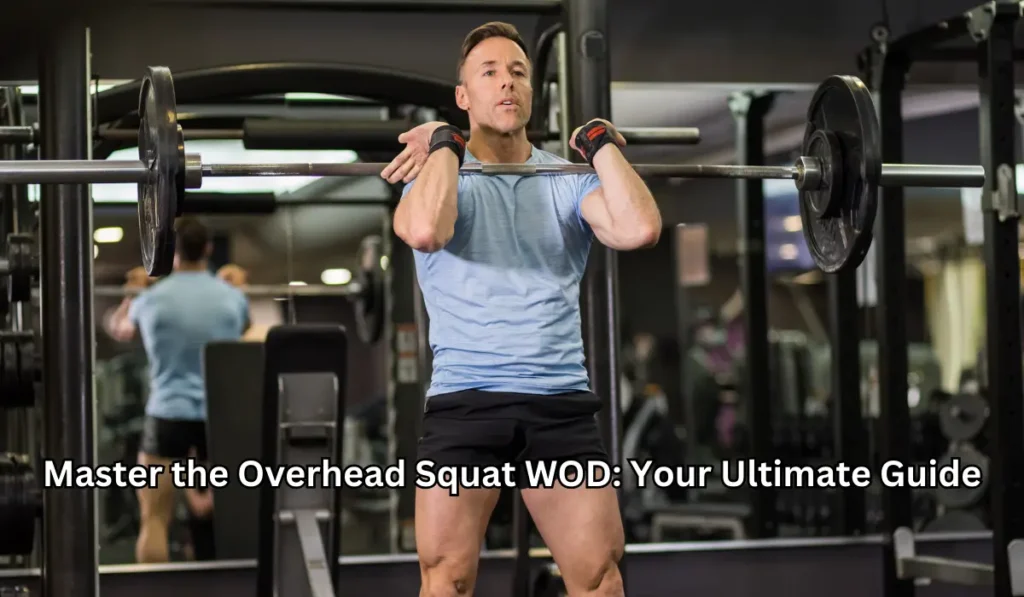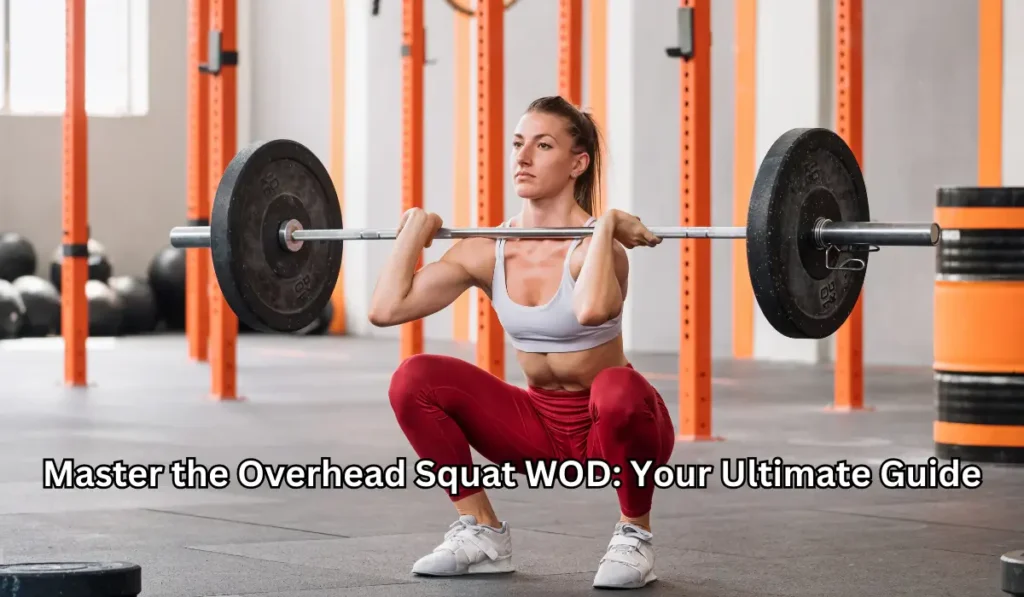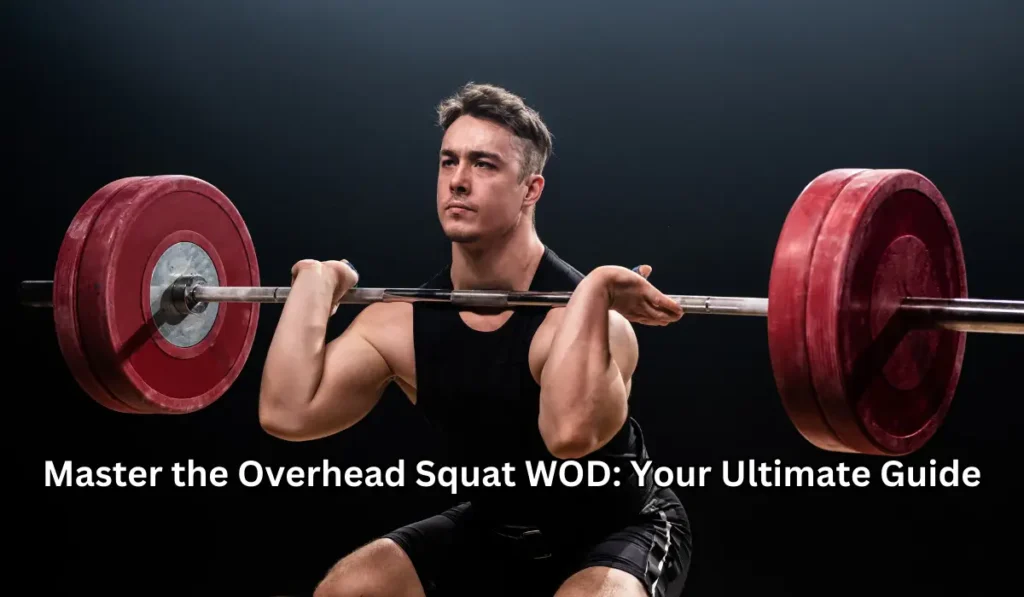
Master the Overhead Squat WOD: Your Ultimate Guide
If you’re looking to take your CrossFit training to the next level, mastering the overhead squat is an absolute must. This complex movement challenges your entire body, targeting your legs, core, and upper body all at once. But despite its difficulty, the overhead squat is one of the most rewarding exercises you can perform – it’s a true test of strength, stability, and mobility.
In this post, we’ll be diving deep into the world of the overhead squat WOD, exploring what makes it so challenging, and discussing the best ways to conquer it. We’ll cover everything from the basic form and technique to advanced variations, and we’ll give you all the tips and tricks you need to master this ultimate CrossFit move. So if you’re ready to take your training to the next level, read on – this post is for you.
But before we get into the nitty-gritty of the overhead squat WOD, let’s take a step back and explore why it’s such an important exercise in the world of CrossFit. What sets the overhead squat apart from other moves, and why do so many athletes struggle with it? To answer these questions, we need to take a closer look at the mechanics of the movement and the muscles it targets. So grab your barbell and get ready to dive in – we’re about to unlock the secrets of the overhead squat.
Read about Chadwick Boseman Workout
Overhead Squat as an Important Exercise in CrossFit
The overhead squat is one of the most important exercises in CrossFit. It challenges the entire body, targeting the legs, core, and upper body simultaneously. The movement requires a high level of strength, stability, and mobility, making it an excellent test of an athlete’s fitness level.
One of the key benefits of the overhead squat is that it engages multiple muscle groups at once. This means that it can be an incredibly efficient exercise, allowing athletes to maximize their training time and get the most out of their workouts. The overhead squat also requires a high level of balance and coordination, helping to improve an athlete’s overall physical awareness and control.
Beyond its physical benefits, the overhead squat can also be an important mental challenge for athletes. The movement requires focus and concentration, as well as a willingness to push through discomfort and fatigue. By mastering the overhead squat, athletes can improve their mental toughness and develop the mindset necessary for success in all areas of their lives.

Mechanics of the Overhead Squat WOD
Proper Form and Technique
The snatch balance is a variation of the snatch movement in weightlifting that focuses on developing speed and power in the receiving position. Proper form and technique are critical for performing the snatch balance safely and effectively.
To perform the snatch balance, start with the barbell in a snatch grip position, with your feet shoulder-width apart. Begin by dipping your hips down and then explosively driving the barbell upward with your legs, simultaneously pulling yourself under the bar. As the bar reaches the top of its trajectory, you should drop down into a full squat position, with your hips below your knees and the barbell locked out overhead.
It’s important to keep your core tight throughout the movement to maintain stability and control. Your feet should remain flat on the ground, and your knees should track over your toes. Your elbows should be locked out overhead, with your shoulders active and engaged.
Read about Effective Upper Glutes Workout
Muscles Targeted During the Movement
The snatch balance targets a wide range of muscles throughout the body, making it an excellent exercise for developing overall strength and power. The primary muscles targeted during the snatch balance include the quadriceps, hamstrings, glutes, and calves, as well as the shoulders, upper back, and triceps.
In addition to these primary muscle groups, the snatch balance also engages a number of secondary muscles, including the core, forearms, and grip muscles. This comprehensive engagement of the entire body makes the snatch balance a highly effective exercise for developing total body strength and athleticism.
Importance of Mobility and Flexibility
Mobility and flexibility are critical for performing the snatch balance safely and effectively. The movement requires a high degree of mobility in the hips, ankles, and shoulders, as well as flexibility in the wrists and elbows.
If you lack mobility or flexibility in any of these areas, you may struggle to perform the snatch balance with proper form and technique. This can increase your risk of injury and limit your ability to perform the exercise effectively.
To improve your mobility and flexibility for the snatch balance, incorporate stretching and mobility exercises into your warm-up and cool-down routines. Focus on stretching your hips, ankles, and shoulders, as well as mobilizing your wrists and elbows. Additionally, consider working with a coach or trainer who can help you identify any areas of weakness or imbalance in your mobility and develop a personalized mobility and flexibility routine.
Common Mistakes and How to Correct Them
While the snatch balance is an effective exercise for developing total body strength and power, it can be challenging to perform correctly. Here are some common mistakes that athletes make when performing the snatch balance, along with tips on how to correct them.
Mistake #1: Losing Control of the Barbell
One of the most common mistakes athletes make when performing the snatch balance is losing control of the barbell as they drop into the receiving position. This can result in the barbell crashing onto the athlete’s shoulders or falling behind them, both of which can be dangerous.
To correct this mistake, focus on maintaining control of the barbell throughout the movement. Keep your core tight and your shoulders engaged, and use your wrists to guide the barbell into the receiving position. Additionally, make sure that you’re dropping straight down into the squat position, rather than moving forward or backward.
Mistake #2: Not Using the Legs Enough
Another common mistake athletes make when performing the snatch balance is relying too much on their upper body to move the barbell. This can result in a loss of power and control and can make the exercise more difficult than it needs to be.
To correct this mistake, focus on using your legs to drive the barbell upward. Begin by dipping your hips down and then explosively driving the barbell upward with your legs, using the momentum to pull yourself under the bar. This will help you generate more power and speed, making the exercise more effective and efficient.
Mistake #3: Letting the Barbell Drift Forward
A third common mistake athletes make when performing the snatch balance is allowing the barbell to drift forward as they drop into the receiving position. This can cause the athlete to lose balance and control and can make it difficult to stand up out of the squat position.
To correct this mistake, focus on keeping the barbell directly overhead as you drop into the receiving position. Keep your core tight and your shoulders engaged, and use your wrists to guide the barbell into the correct position. Additionally, make sure that your feet remain flat on the ground and your knees track over your toes, rather than moving forward.
Variations of the Overhead Squat
The snatch balance is a highly effective exercise for developing total body strength and power, but there are also several variations of the movement that athletes can use to target different muscle groups and add variety to their workouts. Here are some variations of the snatch balance:
- Behind-the-Neck Snatch Balance: This variation of the snatch balance is performed with the barbell held behind the athlete’s neck. It targets the shoulders, upper back, and triceps more directly, and can be used to improve shoulder stability and mobility.
- Snatch Grip Push Press: The snatch grip push press is a similar movement to the snatch balance, but the athlete finishes the movement by pressing the barbell overhead rather than dropping into a full squat position. This variation targets the shoulders, triceps, and upper back, and can be used to improve overall upper body strength and power.
- Drop Snatch: The drop snatch is a variation of the snatch balance that involves starting with the barbell locked out overhead, rather than beginning with the barbell at the athlete’s shoulders. This variation requires a high degree of speed and explosiveness and targets the legs, core, and upper body.
- Snatch Balance with Pause: This variation of the snatch balance involves pausing for a few seconds in the receiving position before standing up out of the squat. This variation is used to improve stability and control in the receiving position and can be helpful for athletes who struggle with balance or control in the movement.
- Overhead Squat Snatch: The overhead squat snatch is a combination of the snatch and the overhead squat, in which the athlete performs a snatch and then drops directly into a full squat position, with the barbell locked out overhead. This variation targets the legs, core, and upper body, and is a highly effective exercise for developing total body strength and power.
Incorporating variations of the snatch balance into your workout routine can help you target different muscle groups and add variety to your training. Experiment with different variations to find the ones that work best for you, and challenge yourself to push your limits and achieve your fitness goals.
Read about Technique of Bicep Pull Down

Tips and Tricks for Mastering the Overhead Squat
The overhead squat WOD is a challenging exercise that requires a high degree of strength, stability, and mobility. Here are some tips and tricks to help you master the movement:
- Start with a PVC Pipe or Empty Barbell: If you’re new to the overhead squat, start by practicing the movement with a PVC pipe or an empty barbell. This will allow you to focus on your form and technique without the added weight of the barbell.
- Focus on Your Mobility and Flexibility: As mentioned earlier, the overhead squat requires a high degree of mobility and flexibility, particularly in the hips, ankles, and shoulders. Incorporate stretching and mobility exercises into your warm-up and cool-down routines to improve your mobility and flexibility and make the movement easier to perform.
- Strengthen Your Core: The core plays a critical role in maintaining stability and control during the overhead squat. Incorporate core strengthening exercises, such as planks and Russian twists, into your workout routine to improve your core strength and stability.
- Build Up Your Strength and Endurance: The overhead squat is a demanding exercise that requires a high level of strength and endurance. Incorporate strength training exercises, such as squats and lunges, into your workout routine to build up your leg strength, and consider incorporating cardio exercises, such as running or cycling, to improve your endurance.
- Get Feedback from a Coach or Trainer: Finally, consider working with a coach or trainer who can provide feedback on your form and technique and help you identify areas for improvement. A coach or trainer can also help you develop a personalized training plan to help you achieve your fitness goals and master the overhead squat.
In conclusion, the overhead squat WOD is a challenging but highly rewarding exercise that can help you develop total body strength and power. By focusing on your mobility and flexibility, strengthening your core, building up your strength and endurance, and getting feedback from a coach or trainer, you can master the overhead squat and take your fitness to the next level.
